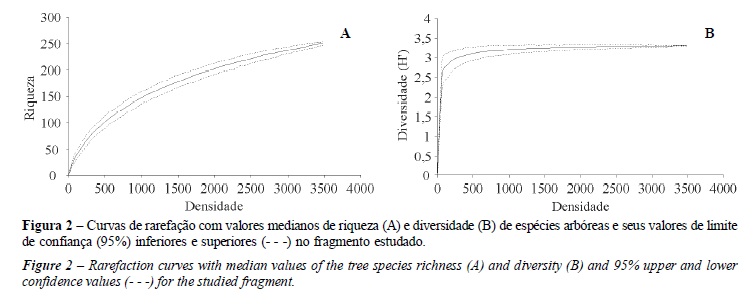This study evaluated the structure of the tree community of Pacotuba National Forest, in Cachoeiro de Itapemirim - ES. For the phytossociological inventory, 12 sample plots of 40 x 50 m each were systematically laid out. All trees with DBH≥5 cm were measured and identified. The phytossociological analysis was based on the absolute and relative parameters of density, dominance, frequency, importance values and basal area values. The diametric structure was analyzed using diameter class histograms defined by Spiegel's formula A total of 3570 individuals, 253 species and 52 families were sampled. The species with the highest importance value (IV) were: Senefeldera verticillata, Actinostemon estrellensis, Anadenanthera peregrina. The diametric curves (J-reverse shape) and values of Liocourt' s 'q' quotient suggested problems involving lack of regeneration. The value of basal area (25,72 m².ha-1) and the highest dominance of few species classified this fragment as in the intermediate stage of succession. However, due to the expressive species richness and the presence of some endangered tree, this remnant forest should be considered as a priority area for establishment of conservation and management practices.
Fragmentation; Semideciduous Seasonal Forest; phytosociology






